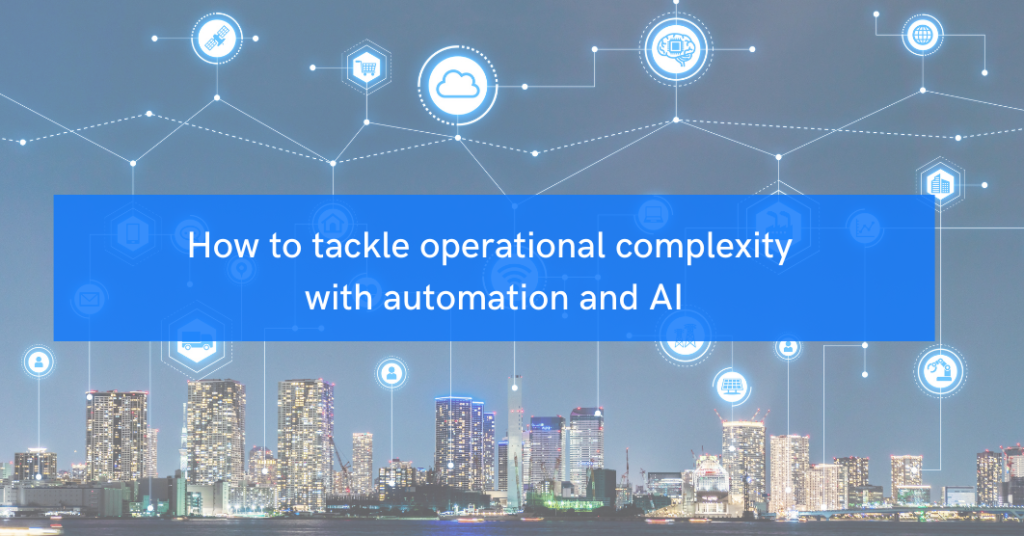Using AI to automate routine business processes and prioritise business-critical issues
There are myriad state-of-the-art solutions to the issues businesses face today, but although they are widely available, the covid-19 pandemic has reminded us how vulnerable the economy is. What remains true is that although there have been several consistent decades of progress and innovation, companies are not as resilient as previously thought. Even under optimal circumstances, the modern global market consistently adapts and evolves, and consumer habits adapt along with it.
The tempo of change has been accompanied by a degree of complexity that is hard for people to deal with on their own. Issues that could not have been predicted, such as the immediate need for employees to work remotely, have brought with them major interruptions and difficulties. In order for companies’ operations to be made resilient against disruptions and made future-proof, organisations have to play a more active role in preparation.
Automation and artificial intelligence can help. Here’s how:
Automation of regular operations
Every company performs numerous activities on a daily basis that can be automated. As an example, employees in the marketing department may devote a large amount of time preparing social media or blog posts for manual publishing. The organisers of events may spend time sending emails to all of the people who signed up. Groups of researchers may work for hours searching the web for information on the latest trends. All of these are examples of activities that can be automated.
The automation of routine operations is not only about replacing human jobs with computers. It is much more about strengthening employees’ capabilities by bringing down digital noise and providing them the ability to concentrate on the work that matters the most. Despite the clear benefits, automation and artificial intelligence are largely misunderstood. The goal is not to make your operations less human – quite the opposite. The goal is to provide your team with the time required to focus on activities that require a human touch.
The list of routine practices includes items such as requests and non-critical alerts. As an example, AI operations can assess alerts to consider if they can be automatically processed based on the metrics and supporting data at hand.
Cutting down on human error
Digital technology is frequently blamed when something does not go as expected, but the facts remain that human error usually is the cause of problems. This stands to reason: laborious and repetitive manual processes are likely to result in human error, if only because it is more difficult to maintain focus while performing monotonous tasks. In addition, certain systems are too complicated for humans alone to manage. One example is Big Data, which refers to sets of data that are too large and complex for human understanding alone.
AI does not eliminate human error from common operations. It can also identify critical issues more rapidly and with increased accuracy. This proves to be exceedingly important in information security, where more and more sophisticated attacks target a large number of interconnected systems. AI systems can create maps of these events and point out the sources of the incident. This provides people with the opportunity to take rapid action and quickly make informed decisions before the situation gets out of control
AI can do even more by making recommendations based on successful outcomes in the past, and by redirecting critical work to the correct employees. With regard to the availability and security of systems deemed mission-critical, AI proves to be more effective every time over the sluggishness of human response.
Accommodating and evolving to change
Modern organisations need to evolve rapidly to swift changes on the market, including situations where something entirely unexpected occurs. Companies must also have the capacity to grow organically without the risk of falling apart under their own weight. To put it differently, organisations must have the ability to adapt in a time of unceasing change and economic unpredictability.
One very large benefit of AI-augmented automation is that it provides the ability to scale massively. While it is true that AI demands considerable computing power, such power has become much more affordable and readily available than human resources. Considering the scalability of cloud data centres available to you, operations can grow much more easily. As an example, AI might be able to identify unforeseen spikes in online activity and automatically scale server capacity to take into account the increased demand.
Once automated workflows have been put into place, they can be applied to almost every task. This results in fewer business processes to manage when working at a high level of performance.
Conclusion – taking decisive action toward to digital transformation
Although automation provides IT employees to perform a large number of repeatable workflows set off by specific inputs or events, the true power rests in how modern solutions make effective use of artificial intelligence. AI augments automation by being proactive, and acting on the basis of minor trends which can be identified within increasingly large and complicated data sets, in addition to behavior patterns in history. Put differently, AI can take automation to the next level by handling routine decision making.
